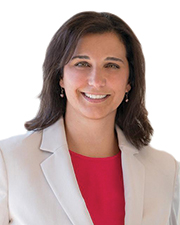How to relieve the appraiser shortage: Solutions are being considered right now - by Bill Pastuszek
There is a shortage of real estate appraisers, residential and commercial, in every part of the country. This is relatively good news for those out there who are willing to take advantage of the shortage.
There is also the fear, rightfully held, that this shortage is not going to be cured soon. Bringing appraisers on line sounds easier than it really is.
Read on. Here are some possible solutions.
1.) Get More Appraisers Out There. Great idea, but where will they come from? The economy is pretty good right now, certainly better than it was three years ago. People are working and getting paid. So, how to convince someone to come work and drive their car into the ground and get no benefits while working for less than sterling wage?
2.) Educate More Appraisers. Great idea. The educational requirements were increased for residential and commercial appraisers more than a few years ago. The increased thresholds and higher college/associate degree requirements seemed like a good idea at time, and were definitely a good idea for those on a General Certified Track, but has stunted the residential end of the business. As much sufficient career-related education is critical to producing highly skilled professionals, the entrance-level residential requirements have worked as a barrier to creating a sufficient number of adequately trained appraisers in the market place.
The Appraiser Qualifications Board (AQB) has proposed some alternatives to the current education requirements in their current Exposure Draft. While a step in the right direction, these initiatives, if implemented as soon as possible, are not going to do much to relieve the immediate problem.
3.) Train more Appraisers. Given the current restrictions on the number of trainees that can be supervised by one appraiser, it’s is going to be difficult to grow the profession in a meaningful way. However, remember why this requirement was originally put into place? Because single appraisers had hordes of trainees, essentially unsupervised, working for them and that was considered a contributory factor in the real estate crash.
4.) Make Appraisers More Efficient. This is an internal problem. While not wanting to insult those tech savvy appraisers out there, it seems that the appraisal profession does not attract persons who have great technological aptitude. In fact, many people seem to like the appraisal business because at its heart, it still isn’t very technological, and many would just as soon see it stay that way.
5.) Lead Change, Not React to It. The profession is too reactive and not proactive enough. Rather than complain about changes to the process, the profession should be getting more, not less involved in making changes for a more efficient, flexible, and technologically successful educational process and profession. The market is not going to wait for appraisers; the market is going to create efficiencies and new pathways whether appraisers come along or not.
6.) Make Changes to the Process. Given the shortage of appraisers, the secondary market is coming up with its own solutions. Part of the solution is to automate certain low risk appraisal assignments: not an entirely bad idea, but this is the type of practice that is prone to circumvention and to create problems. The elegance of the solution is that appraisers get taken out of the process. Other alternative products “farm out” the inspection and have the appraiser take responsibility for the valuation. Again, not a bad solution, but open to problems.
Several more creative solutions come to mind. Take them, please, with a large grain of salt.
7.) Get Rid of USPAP. No, that’s not right, and, it’s not going to happen. In fact, USPAP’s not really the problem. If one goes back to the start of licensing, nobody ever knew much about or cared about that USPAP thing until it became part of appraisers’ licensing responsibilities and everybody had to take a USPAP every two years. USPAP is actually a good thing. It protects appraisers in ways that many appraisers have no clue about.
8.) Get Rid of FNMA. No, that won’t happen either. FNMA is here to stay. And FNMA will continue to dictate how appraisals will be done for mortgage lending. They will be the appraisal change agent. Appraisers will just have to agree to do what they are told to do, unless there is some sea change in appraisers’ influence on the appraisal process as it relates to mortgage lending. Not much hope there.
9.) Allow the Use of Drones for Inspections of the Subject and Comparables. Amazon may have answers for appraisers. Would this require a change in the current certification statements regarding inspections? Would a license be required to operate drones in accordance with USPAP?
10.) Employ Self-Driving Cars. Wouldn’t this allow more time for appraisers to write reports while in motion? And it would eliminate all that texting/emailing while driving. Not entirely fanciful. But it will have to wait while it becomes affordable and it will have to wait until appraisers see fit to adopt such a radical concept.
The appraisal profession is in better shape than it was before the crash. Some important and necessary changes were made. Some changes that have been made are not such good ones but they won’t be going away.
The appraiser shortage may ultimately work against the profession. The residential appraisal sector needs to be careful to not be rendered “excess” in mortgage lending. Solutions are being considered at this very moment. Stay tuned.
Bill Pastuszek, MAI, ASA, MRA, heads Shepherd Associates, Newton, Mass.
Eastern Bank donates $2 million to Lynn Public Schools


Real estate without good estate planning - a troublesome problem - by Daniel Calano

The focus on price per s/f compared to the comparable sales used in the appraisal report - by Dennis Chanski

It’s a confusing real estate world: Don’t you think? - by Daniel Calano











.png)